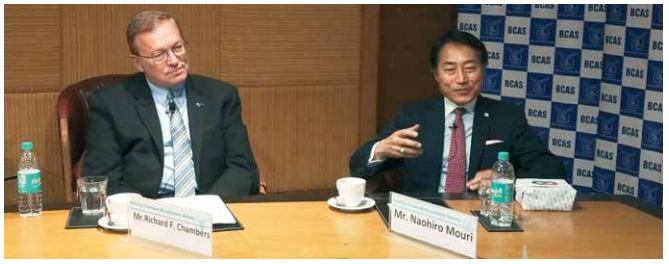29 (2008) 114 TTJ 145 (Ahd.)
National Dairy Development Board v. ACIT
ITA No. 454 (Ahd.) of 2006
A.Y. 2003-04. Dated : 17-8-2007
S. 32 and S. 43(6) of the Income-tax Act, 1961 — Assessee not
being a taxable entity in earlier years, it was entitled to depreciation on the
original cost of the assets without reducing from original cost the notional
depreciation accounted for in the books of assessee.
For the relevant assessment year, the assessee claimed
depreciation for the first time on the original cost of certain assets, even
though these assets were purchased and used by it in earlier years.
The assessee claimed that as per the provisions of S. 43(6),
the WDV had to be computed by reducing the depreciation actually allowed against
the cost of the assets and that there was no concept of mental calculations of
the depreciation as having been allowed in the tax-free period. Therefore,
depreciation during the current year has to be computed on the original cost of
the assets. The Assessing Officer rejected the contention of the assessee, as in
his view, the principle governing the depreciation allowance is the effective
life of the depreciable assets and the expenditure incurred on its wear and tear
for the period of its consideration and since the assessee had been using the
assets in question for years, such assets must have depreciated greatly by their
use and some of them might have reached the stage of being discarded. Hence, in
order to arrive at the correct income, normal wear and tear of the assets had to
be taken into account. The CIT(A) upheld the AO’s order.
The Tribunal, relying on the decisions in the following
cases, allowed the assessee’s claim :
(a) CIT v. Straw Products Ltd., (1966) 60 ITR 156
(SC)
(b) CIT v. Dharampur Leather Co. Ltd., (1966) 60 ITR
165 (SC)
(c) CIT v. Mahendra Mills, (2000) 159 CTR (SC) 381,
(2000) 243 ITR 56 (SC)
(d) Madev Upendra Sinai v. Union of India & Ors.,
(1975) 98 ITR 209 (SC)
The Tribunal observed as under :
(1) S. 32 provides for depreciation on the WDV of the
asset. S. 43(6) defines the WDV to mean, in case of asset acquired in the
previous year, the actual cost to the assessee and in other cases, the actual
cost to the assessee less all depreciation actually allowed to him under the
Act.
(2) The short controversy is whether the “WDV of the asset
is to be taken at the original cost or as reduced by the notional depreciation
accounted for in the books of assessee and deemed to have been allowed in the
earlier years when the assessee was not chargeable to tax”.
(3) The term ‘actually allowed’ means allowed actually
under the Act and not notionally.
(4) In the earlier years the assessee was not liable to tax
and, therefore, the question of allowing any depreciation to the assessee
would not arise. The depreciation of the exempted period cannot be said to
have been allowed to the assessee.
(5) Wherever the legislature has wanted to reduce the WDV
to be ascertained after allowing notional depreciation, it has specifically
provided so, e.g., in S. 10A(6) providing for the deemed allowance of
depreciation for the assessment years ending before 1st of April 2001. S.
10B(6) also provides for similar deemed allowance of depreciation for any of
the relevant assessment years ending before the 1st of April 2001.
(6) As the income of the assessee was exempt until the
earlier year, no notional depreciation can be assumed and, therefore, it would
be entitled to the depreciation on the original cost of the assets.









